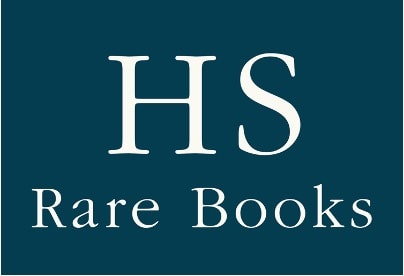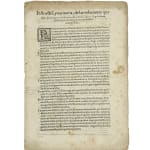![López de Velasco, Juan, Instructio[n], y memoria, de las relaciones que se han de hazer, para la descripción de las Indias que su Magestad manda hazer, para el buen gobierno y ennoblecimiento dellas. Memoria de las cosas que se ha de responder y: de se an de hazer las relaciones, S.a. [1577]. S.l. [Madrid].](https://artlogic-res.cloudinary.com/w_1600,h_1600,c_limit,f_auto,fl_lossy,q_auto/artlogicstorage/hsrarebooks/images/view/a51ac2e057fd50d8c38e681e5eb1e068j/hsrarebooks-l-pez-de-velasco-juan-instructio-n-y-memoria-de-las-relaciones-que-se-han-de-hazer-para-la-descripci-n-de-las-indias-que-su-magestad-manda-hazer-para-el-buen-gobierno-y.jpg)
![López de Velasco, Juan, Instructio[n], y memoria, de las relaciones que se han de hazer, para la descripción de las Indias que su Magestad manda hazer, para el buen gobierno y ennoblecimiento dellas. Memoria de las cosas que se ha de responder y: de se an de hazer las relaciones, S.a. [1577]. S.l. [Madrid].](https://artlogic-res.cloudinary.com/w_1600,h_1600,c_limit,f_auto,fl_lossy,q_auto/artlogicstorage/hsrarebooks/images/view/b57c785525100716ea9406ac2ffa702fj/hsrarebooks-l-pez-de-velasco-juan-instructio-n-y-memoria-de-las-relaciones-que-se-han-de-hazer-para-la-descripci-n-de-las-indias-que-su-magestad-manda-hazer-para-el-buen-gobierno-y.jpg)
![López de Velasco, Juan, Instructio[n], y memoria, de las relaciones que se han de hazer, para la descripción de las Indias que su Magestad manda hazer, para el buen gobierno y ennoblecimiento dellas. Memoria de las cosas que se ha de responder y: de se an de hazer las relaciones, S.a. [1577]. S.l. [Madrid].](https://artlogic-res.cloudinary.com/w_1600,h_1600,c_limit,f_auto,fl_lossy,q_auto/artlogicstorage/hsrarebooks/images/view/f898c9f97e77db22de09174d235821d9j/hsrarebooks-l-pez-de-velasco-juan-instructio-n-y-memoria-de-las-relaciones-que-se-han-de-hazer-para-la-descripci-n-de-las-indias-que-su-magestad-manda-hazer-para-el-buen-gobierno-y.jpg)
López de Velasco, Juan
First edition of this exceptionally rare questionnaire for the administrators and officials of the Indies. The questionnaire was intended to be comprehensive and covered a variety of topics: first focuses on toponyms and their meanings in the native language, followed by questions about Spanish explorers and conquerors. It continues with issues related to climate, rainfall, and the days of the year when the sun casts no shadow at midday. It inquiries about historical matters such as previous rulers, religion, and wars, as well as clothing before and after the conquest and the population's health before and after the arrival of the Spanish. It also addresses orography, hydrography, volcanic activity, crops, herbal medicine, medicinal plants, wild and even domestic fauna, and resources such as minerals and precious stones. The questionnaire also seeks information about churches, monasteries, convents, hospitals, schools, and charitable institutions. It mentions specific products of great utility in both America and Europe, such as silk, cochineal, and salt. Additionally, it requires the creation of religious maps that include streets, squares, churches, roads, coastlines, and islands when the surveyed communities are located near the ocean.
Further images
Folio, (304 x 215 mm). 2 ff. Marginal annotations, possibly contemporary, scattered foxing.
During the reign of Philip II, the Council of the Indies created the position of cosmographer and chronicler, assigned to Juan López de Velasco in 1571, to understand the territorial organization and the way of life of the inhabitants of New Spain six decades after the conquest of Mexico. To this end, López de Velasco drafted the present printed questionnaire of fifty questions, which was sent to officials throughout the Americas. The handwritten answers to these questions were sent to Spain and preserved in institutions.
Once distributed, the officials, who were also required to sign their names in the final question, answered the questionnaire. They consulted with indigenous communities and commissioned painters to create the maps when necessary. The manuscripts with the responses were sent back to Spain. Still, this extensive collection remained unpublished until 1894, when it was first published in the Boletín de la Sociedad Geográfica de Madrid, with additions and illustrations by Justo Zaragoza [S.l.]: [s.n.] (Madrid : Estab. Tip. de Fortanet), 1894. The questionnaire was later included in a royal cédula dated in San Lorenzo on May 25, 1577.
“Elaboradas para ofrecer al rey de Castilla y al Consejo de Indias descripciones fidedignas de los territorios conquistados al otro lado del Atlántico. El cuestionario de las Relaciones Geográficas, impreso en 1577, estaba dirigido a las autoridades españolas del Nuevo Mundo (virreyes y presidentes de las Audiencias) para que a su vez encargaran a funcionarios subalternos (alcaldes mayores, corregidores o encomenderos) la compilación de los reportes. Éstos, a su vez, convocaban a miembros de la élite indígena local (gobernadores, alcaldes/ jueces, regidores y principales) para que proporcionarán las respuestas de manera oral en sus lenguas nativas, mismas que eran transcritas con la ayuda de un traductor y un escribano. La Instrucción resulto acertada, pues tanto los residentes como los funcionarios locales tenían conocimientos de primera mano sobre lo que acontecía dentro de los pueblos y ciudades de su jurisdicción”] (Liceras-Garrido, Raquel, Mariana Favila-Vázquez, Katherine, Bellamy, Patricia Murrieta-Flores, Diego Jiménez-Badillo & Bruno Martins. Digital approaches to Historical Archaeology: Exploring the Geographies of 16th Century New Spain, Open Access Journal of Archaeology and Anthropology, vol. 2 num. 1, pp. 1-12.)
Only two copies are located: John Carter Brown Library, Rare Books, and Archivo de Indias.
Medina, BHA, 245; Palau, 120116; European Americana, 577/45.
Join our mailing list
* denotes required fields
We will process the personal data you have supplied in accordance with our privacy policy (available on request). You can unsubscribe or change your preferences at any time by clicking the link in our emails.



